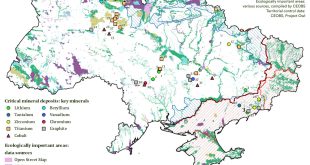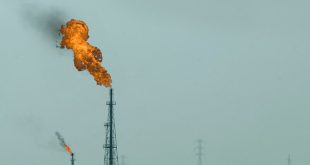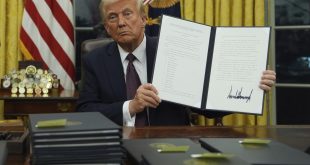Currently, the main source of Saudi revenues is oil production—at a rate of nine to ten million barrels per day. Yet, this is not the kingdom’s only resource: Saudi Arabia is actively engaged in implementing many industrial projects, including energy projects and projects based around crude oil, in an effort to diversify its economy and wean itself off of dependence on oil.
Saudi oil resources and oil policies play a primary role in the kingdom’s dealings with the outside world. Yet in light of recent international outrage over various Saudi abuses and atrocities, such as the killing of journalist Jamal Khashoggi, the country is focusing more and more on plans for diversification under Vision 2030.
Oil prices will continue to play a significant role in Saudi Arabia’s economy, but whether Saudi Arabia can maintain oil prices to provide a steady stream of income, is a matter that must be coordinated with OPEC, of which it is a powerful member state. Success in this arena will require coordination among the ruling Saudi government, the U.S., and the other major oil powers.
According to reports, the U.S. has announced that it will be able to supply 80 percent of the world’s oil demand through its own shale oil supplies within the next three years. While this may be exaggerated, the U.S. seems intent on keeping oil prices at a level of at least $55 to $60 per barrel over the next three years. At this price, Saudi Arabia can be confident over the next few years of a steady income stream from oil.
Saudi Minister of Energy, Khalid Al-Falih, has announced that there will be no change in Saudi oil policy.
Saudi Minister of Energy, Khalid Al-Falih, has announced that there will be no change in Saudi oil policy. Riyadh’s goal is to keep its share of the market in oil, and it expects to earn at least $2 trillion in sales of up to 5 percent of Aramco stock, although in August 2018, Saudi Arabia postponed the much anticipated initial public offering. Nevertheless, Al-Falih has promised to bring this amount into the global industry, and the proceeds from the Aramco sale and the resulting business will be transferred to Saudi Arabia’s Public Investment Fund (PIF).
The PIF Program (2018-2020) is one of twelve Saudi “vision realization” programs. The program outlines Saudi objectives in local and international investments that will enable the diversification of the kingdom’s sources of development and growth. In total, with other revenues injected into the fund, it is expected to reach $3 trillion. The minister hopes that other industries will also be motivated to grow.
Saudi Arabia’s 2030 plan is an opportunity to reduce the kingdom’s dependence on oil. Crown Prince Mohammed bin Salman has strongly criticized decades of the Saudi addiction to oil – blaming it for the kingdom’s recession. The sale of a small part of Aramco, the world’s largest oil company, will create the world’s largest investment support fund intended to operate in a wide range of capital markets, create more employment for women, and focus more on the dynamics of non-oil industries from mining to military hardware.
These goals are very radical in a country where 90 percent of the government’s revenues come from oil, and whose budget deficit has reached 13.5 percent of GDP since the fall in oil prices in 2016. The crown prince claims that the country can develop trade, investment, and foreign tourism to bring its non-oil revenues up to $600 billion by 2020.
Renewable Energy
Saudi Arabia’s domestic consumption is fully dependent on hydrocarbon fuels, which accounts for a quarter of its oil and natural gas production.
At present, Saudi Arabia’s domestic consumption is fully dependent on hydrocarbon fuels, which accounts for a quarter of its oil and natural gas production. The government hopes to supply more oil and gas to lucrative foreign markets by replacing its reliance on it with atomic energy and renewable resources. The Saudi government plans to develop 30 solar and wind power plants over the next ten years. The plans will be part of a major $50 billion expansion plan for renewable energy to reduce dependence on oil by 2030.
Saudi Arabia is preparing itself to provide around 30 percent of its electricity needs over the next 20 years from its largest potential source of energy – solar power. It has one of the world’s highest levels of solar radiation and targets installing photovoltaic capacity of more than 41 gigawatts of electricity by 2032. To do this, Saudi Arabia has been counting on China’s help as a leading developer.
Riyadh hopes that in the decades ahead, it will contribute more to reducing its fossil fuel consumption to export markets, but the Saudi Energy Research Center has acknowledged that hydrocarbons will still have a major contribution to the energy basket by 2032 and beyond. The projections of the energy mix until then include 60 gigawatts (GW) of hydrocarbon fuels, 41 GW of solar energy, 17.6 GW of nuclear power, 9 GW of wind power, 3 GW of waste to energy, and 1 GW of electricity generated by geothermal energy.
Wind
Saudi Arabia has high potential for wind around the Red Sea and southeast of the country. Four large consortiums have signed contracts worth $500 million to build the first Saudi wind power plant. The contract is based on a 20-year Power Supply—Power Purchase Contract, signed by Saudi Power Company. The plant is expected to supply 70,000 Saudi Arabian households. In addition, based on Saudi Arabia’s 2030 vision, American company General Electric will launch a pilot project for a 2.75-megawatt wind turbine for Saudi Arabia, expected to replace diesel fuel from one of Aramco’s refinery complexes.
Experts believe the wind industry in Saudi Arabia is an important step in the country’s energy resource shift strategy. The first large Saudi-scale wind turbine is actually an important chapter in Saudi Arabia’s efforts to diversify its energy mix. Saudi Arabia’s Aramco Oil Company said it plans to turn the country into a clean and renewable energy hub through the construction and development of a massive wind project.
Aramco, Saudi Arabia’s oil giant, recently announced plans to allocate billions of dollars to build and develop a huge project called Spark, which will make Saudi Arabia the largest clean energy hub and facility.
Aramco, Saudi Arabia’s oil giant, recently announced plans to allocate billions of dollars to build and develop a huge project called Spark, which will make Saudi Arabia the largest clean energy hub and facility. According to officials and executives of the company, the project will be completed in 2035, spanning a land area of 50 square kilometers, near the two cities of Dammam and Alhassa.
Experts estimate that the development and operation of this massive project will, directly and indirectly, generate over 100,000 jobs in Saudi Arabia, with positive changes in the infrastructure of industries and sectors.
Given the projected decline in world oil and gas reserves, many analysts have said for almost half a century now that all countries will have to fully utilize clean and renewable energies.
$7 Billion in Renewable Energy Projects Expected This Year in Saudi Arabia
Saudi Arabia expects this year to launch several renewable energy projects, especially solar power plants, worth $7 billion. Turki Mohammed al-Shihri, director of the Saudi Renewable Energy Development Project Office, has claimed that bids will be issued for eight projects with a total capacity of 4.125 GW this year. The cost of these projects will be between five and seven billion dollars.
Saudi Arabia and other Middle Eastern oil producers are looking for renewable energy to grow domestic demand so that they can export more oil to receive higher oil revenues. Saudi Arabia is looking to install 9.5 GW of solar and wind capacity by 2023. Manufacturers have lowered their solar pricing offerings in recent years. Saudi projects this year include 3.3 GW of solar photovoltaic and 800 megawatts of wind.
The winners of these bids cover the cost of the tender, while the government guarantees that it will buy electricity from these projects within 25 years. The country plans to connect 3.45 GW of renewable energy by 2020, which includes 700 megawatts (MW) of solar and wind power, which has already been tendered. Saudi Arabia expects to receive the final proposals for a 400 MW wind power plant Northwest of the country by March 20th.
Nuclear Energy
Nuclear energy is relatively costly, and in the long run, nuclear generators accrue significant expenses.
Nuclear energy is relatively costly, and in the long run, nuclear generators accrue significant expenses. In addition, there are the obvious dangers, both security and environmental, of nuclear power plants. Saudi Arabia is likely to follow other countries that typically have one or two nuclear generators, notwithstanding that they are not profitable for Western countries.
Saudi Arabia’s 2030 Program for Renewables
Saudi Arabia is moving toward new energy sources by the 2030s, but success depends on whether other resources will be available at affordable prices. Given the huge amount of oil resources available and vast amounts of extracted oil, in the short-term, the Saudis prefer to use these resources and sell their oil as much as possible. But today, there are more urgent needs for energy for making seawater potable and for economic development.
Saudi Arabia is geographically ideal for solar energy, perhaps uniquely so. In fact, this country could produce a lot of clean energy from the sun, but it will likely need countries like Sweden to help it develop clean-running transmission systems.
Challenges
In Saudi Arabia’s vision, reducing dependence on oil revenues is the country’s most important economic target by 2030.
In Saudi Arabia’s vision, reducing dependence on oil revenues is the country’s most important economic target by 2030. However, oil revenues will continue to be important for Saudi Arabia’s domestic political economy because its efforts in the areas of job creation and social services depend upon the continued inflow of oil revenues in the short-term.
Saudi Arabia will be a serious rival in attracting foreign investment to the countries of the Middle East and North Africa, including Iran, in line with the principles and plans outlined in the 2030 vision plan, and this could spell added tensions in the region.
The principal benefits of the Saudi diversification program, if achieved, are that it would buoy the Saudi economy and decrease the vulnerability of the country to fluctuations in the global oil market.
However, the implementation of this large program is dependent on oil revenues and the ability of the country to procure investment from abroad. Saudi Arabia’s oil marketing strategy, on the other hand, continues to expand investment in the refineries of countries with demand growth potential, especially China.
The consequences of the sale of part of Aramco, one of the first steps in this process, will likely be daunting to policy-makers, and may intensify internal disputes; yet, the sale of stock could be the beginning of a wave that provides a model for other governments with similar challenges in the region.




